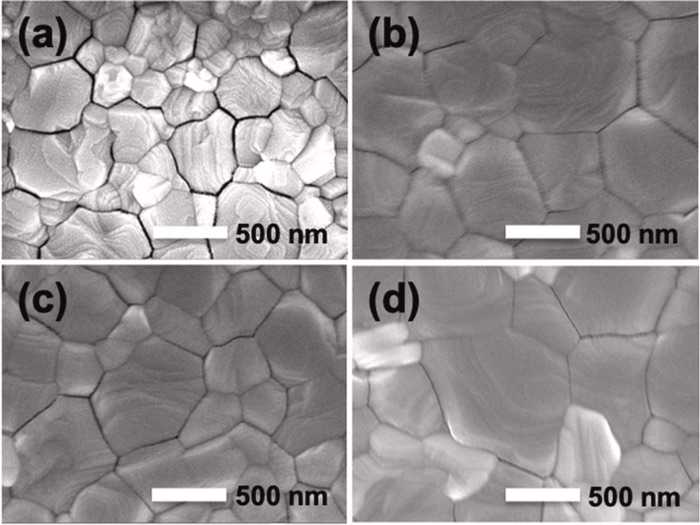Using CsI to improve perovskite stability

Japanese researchers show how CsI intercalation technology can passivate defects and improve performance
Deployment by consumers of perovskite solar cells has been hampered by the limited robustness of these cells,because their structure can decompose after exposure to moisture, light, or heat. New formulations that increase the lifetime of perovskite solar cells are thus needed to instill consumer confidence before people start installing perovskite-based solar panels on their roofs.
Now, a team of scientists headed by Kanazawa University in Japan has discovered that adding CsI to the commonly used MAPbI3 perovskite structure greatly increases the stability of the resulting devices.
The Cs atoms migrate and become 'intercalated' into the crystal lattice, and the improved devices showed power conversion efficiencies as high as 18.43 percent.
The picture above shows SEM images of a) a pristine MAPbI3 film, and perovskite films with b) up layer, c) down layer and d) double layer CsI intercalation.
“Hybrid organic-inorganic metal halide perovskite solar cells are a very fast-growing technology,” corresponding author Md. Shahiduzzaman says. Using scanning electron microscopy, the scientists verified that the size of the crystal grains inside the material also increased from 300 to 700 nm due to the addition of CsI.
They hypothesise that the intercalation of cesium reduces the spacing between the atomic planes, so that moisture from the air cannot intrude as easily. Also, the surfaces become smoother, which allows charges to reach the electrodes. “Our approach allowed us to produce layers with precise control over the CsI intercalation,” corresponding author Tetsuya Taima says.
The graph above shows Normalised PCE versus time for unencapsulated PSCs stored in the dark under ambient air without a UV filter at the 40–50 percent RH. (Inset diagram shows the change in perovskite crystal structure after CsI intercalation).
'Double-layer CsI intercalation into an MAPbI3 framework for efficient and stable perovskite solar cells' by LiangLe Wang et al; Nano Energy (2021)


































